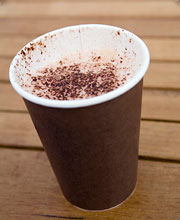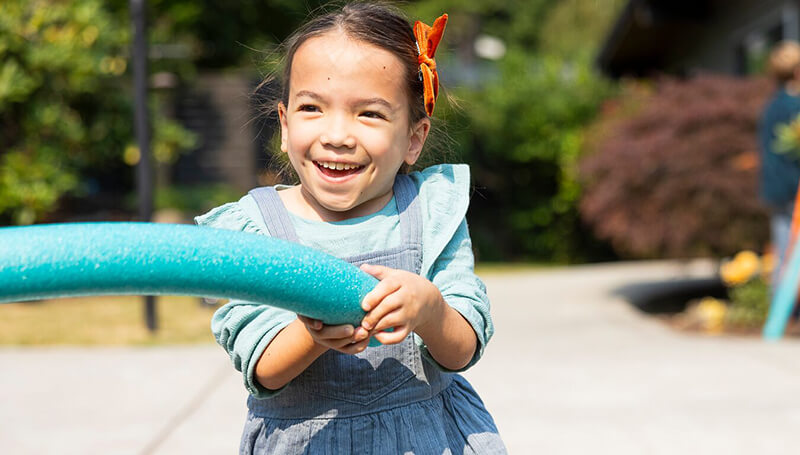Scald Burns: How to Keep Your Child Safe
What is a scald burn?
 A scald is a burn from close contact with hot liquid or steam. Scalds are the most common type of burn affecting young children. Young children have thinner skin than older kids and adults, so they burn easier. Children ages 4 and under are at the most risk for scald burns, because they like to explore and do not know what can hurt them. Kids change so fast that parents and caregivers sometimes don’t know their child can reach hot liquids and foods that would have been at a safe distance only a short time before. Scald burns are most likely to happen at home when a child knocks over a cup of hot liquid, gets splashed by hot liquid carried by an adult, grabs a pot off the stove or pulls on hanging tablecloths or placemats. Your child’s skin can be burned by:
A scald is a burn from close contact with hot liquid or steam. Scalds are the most common type of burn affecting young children. Young children have thinner skin than older kids and adults, so they burn easier. Children ages 4 and under are at the most risk for scald burns, because they like to explore and do not know what can hurt them. Kids change so fast that parents and caregivers sometimes don’t know their child can reach hot liquids and foods that would have been at a safe distance only a short time before. Scald burns are most likely to happen at home when a child knocks over a cup of hot liquid, gets splashed by hot liquid carried by an adult, grabs a pot off the stove or pulls on hanging tablecloths or placemats. Your child’s skin can be burned by:
- Hot water
- Coffee
- Tea
- Soup
- Hot tap water
- Hot liquids from the microwave
Scald burns and their treatment are painful. Long-term scarring can happen. The good news is that most scald burns can be prevented.
How do I keep my baby to 1-year-old safe?
- Set your water heater to 120° F (49º C) or lower, or between low and medium. If you can’t control the heater, install anti-scald devices on your faucets and showerheads. These stop the water from flowing when it is hotter than 120º F.
- Always check the temperature of the water before putting your child in a bath. Use a bath thermometer, or test the water with your wrist or elbow to see that it feels “just warm”.
- Do not leave your child alone in the bathtub or sink. Babies must be watched by an adult the whole time they are bathed.
- Heat baby bottles in warm water, not in the microwave. Microwaving bottles can cause hot spots of breastmilk/chestmilk or formula that can scald your baby’s mouth. Warm baby food on the stove instead of the microwave for the same reason.
- Do not hold your baby while you cook.
- Do not use an exersaucer or walker near counters or tables. Babies can reach up and pull hot liquids onto themselves.
- Keep hot drinks away from the edges of tables and counters.
- If you’re holding something hot, don’t hold your baby too.
- Never carry hot drinks or dishes when your child is near.
- Avoid drinking hot liquids while pushing your child in the stroller. Only use the cup holder on your stroller for cool liquids.
- If you need to use a humidifier or vaporizer, use a cool-mist model rather than a hot-steam one.
How do I keep my 1- to 4-year-old safe?
- Always be with your child in the kitchen and bathroom.
- Teach your child to turn the cold water on first, before the hot water. Teach him to turn the cold water off last, after the hot water.
- Place your child’s back to the faucet in the bathtub so she can’t turn the water on.
- Use a child safety gate to keep your child out of the kitchen while you are cooking.
- Use the back burners on your stove if you can. Or, turn pot and pan handles towards the back of the stove where your child can’t reach them.
- Keep electric cords from appliances on the counter, out of your child’s reach.
- Do not use tablecloths — children try to pull themselves up on them.
- Let hot foods cool in a safe place.
- Pour soup from instant soup containers into bowls that can’t be knocked over as easily.
- Use a travel mug or other cup with a lid for hot drinks. The drink stays warm but is less likely to spill.
- Avoid drinking hot liquids while walking with your child. Only use the cup holder on your stroller for cool liquids.
- Test heated liquids and foods to make sure they are warm, not hot, before giving them to your child or putting them within her reach.
- Teach your toddler what the word “hot” means.
How do I keep my child age 5 and over safe?
- Don’t let your child use the microwave without help from an adult.
- Eat only at the table. Do not let your child hold hot food and drinks over his lap on the couch or in the car.
- Teach your child what causes burns and how to avoid burns.
If Your Child Gets a Scald Burn
- Remove any clothing over the scald or that got wet to stop continued burning.
- Cool the burn with tap water for 10 to 20 minutes. This reduces the depth of the burn.
- Cover the burn in a dry, clean, non-stick bandage or cloth.
- Do not use ice, butter, lotions or oil on burns.
- Watch small burns for blisters (bubbling) and call your child’s health care provider if this happens.
- Take your child to the emergency room for burns on hands, feet or genitals that cause blisters or burns that cause the skin to be open and blackened.
- Call 911 if the burn area is large.

